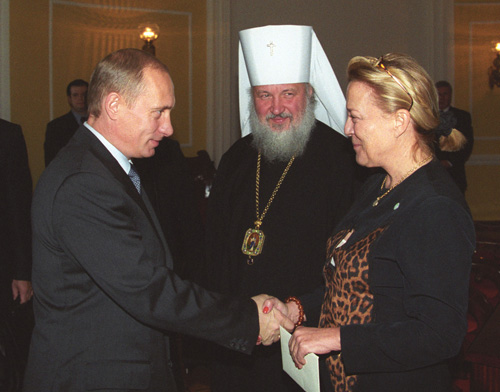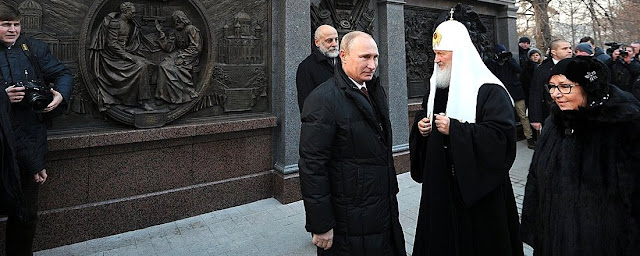Clifford K. ‘Ted’ Shipton working at the American Antiquarian Society. Image credit: Harvard University Archives; www.colonial society.org
Nearly
a century has passed since Clifford Kenyon Shipton’s biography of Roger Conant was
published. The Harvard University archivist still has the distinction of being
the only writer who has focused exclusively in a book about the life and character
of the East Budleigh-born pioneer, recognised as the founder of the
Massachusetts city of Salem.
The statue of Governor William Bradford (c.1590-1657) near Plymouth Rock,
Massachusetts. Image credit: www.seeplymouth.com
One
obvious reason why he has been largely passed over by biographers is the relative
lack of archival material. Other founding-fathers of America who crossed the Atlantic
in the 1620s left records of their beliefs and achievements, giving us an insight
into their character.
William Bradford, Governor of the Plymouth Colony
established following the voyage of the Mayflower, completed and even
revised during his lifetime the journal that he
wrote, giving ‘the account of the colony's struggles and achievements’. It is known
by the title Of Plymouth Plantation.
Portrait of John Winthrop by an unknown artist, thought to be by a follower of Anthony van Dyck
when donated to the American Antiquarian Society. Image credit: Wikipedia
John
Winthrop, who led about 700 migrants to New England, landing at Salem in June
1630, spent much of his life producing
written accounts of historical events and religious manifestations. His major
contributions to the literary world were A Modell of Christian Charity,
written in 1630, and The History of New England, based on his journals
from 1630 to 1649.
Salters’ Hall, Fore Street, London. The present building, designed by Sir
Basil Spence (1907-76), dates from 1976. Image
credit: Stephen Richards; Wikipedia
Of
Roger Conant’s writings there is barely a page.
The records of the Salters’ Company to which he was apprenticed were destroyed
in the Great Fire of London in 1666. In America his friend the New England
clergyman and historian William Hubbard is likely to have interviewed Conant as
part of his research for his History of New
England. And there is the
famous petition of 1671, requesting the change of name for the town where he
settled, from Beverly to Budleigh.
John Washington’s painting ‘Blessed are the Peacemakers’. Image credit: Peter
Bowler
The
legend of Roger Conant the peacemaker seemed to have special significance at
the beginning of 2022 as Europe and the rest of the world pondered on the ‘training
exercises’ that Russia was conducting on the borders of Ukraine. I bought a print
of Budleigh artist John Washington’s ‘Blessed are the Peacemakers’, hoping that
I can explain to my grandchildren what the painting suggests: a vision of a
better world without the cruel stupidity of wars.
By
24 February I was re-reading the preface to Clifford Shipton’s biography of
Conant in a new light. Published in 1945, in the aftermath of the traumatic
events of WW2, it reflected the author’s conviction that the twentieth century
had mirrored Roger Conant’s own times.
‘In his day,’ wrote Shipton, ‘England had reached a
parting of the ways between those two forces which today are struggling for the
mastery of the world. On the one side was respect for human dignity,
faith in the potentialities of the common man, and a longing for liberty of
mind and body. From these have developed the humanitarian complex which we call
democracy. On the other side, in Conant's day as in ours, was absolutism in
mind and state, a contempt for the common man, and a belief that his only function
was to slave for his masters.’
For Clifford Shipton, another
reason for Conant’s story to have been neglected by biographers was that not
until WW2 was the significance of the fight for freedom against the fanaticism
of the Axis powers fully realised. He believed, as he wrote, that Conant’s role
in ‘the planting of liberty in America’ had not begun to be acknowledged
until that same liberty had come
under threat from ‘the totalitarian states’. He may even have been writing in
the light of revelations made as the Allies discovered the horrors of the Nazi death
camps.
The
parallels that the author draws between WW2 and Roger Conant’s time seem so deeply
felt that I wondered whether he had lost family members during the conflict.
I found it impossible not to follow Shipton’s lead
in relating the past to modern times, and I’m not alone. Commenting on events
in Ukraine, Western media seems to be full of articles headlined ‘Is history
repeating itself?’
L-r: Louis XIV of France, by Claude Lefèbvre;
Vladimir Putin; King James II by the Dutch artist Sir Peter Lely. Image credit:
Wikipedia and Kremlin.ru
Superficially, Vladimir Putin does not bear much
resemblance to 17th century rulers in Conant’s time like the Stuart
dynasty in Britain or Louis XIV in France. Yet I suspect that Clifford Shipton
would have equated such rulers’ beliefs in the Divine Right of Kings with how
many Russians view their leader.
For the crime psychologist Professor David Canter,
writing in an article ‘How does Putin think’ published online in February 2022,
the Russian autocrat resembles Adolf Hitler. The Nazi dictator was described as
having ‘an admiration of brute strength, a vision of himself as ultimately superior,
being divinely appointed to lead his people to power and glory, being never
wrong,’ according to a 1943 report by a leading American clinical psychologist.
‘All ring true of Putin,’ concludes Professor Canter.
Many
experts on Russia, along with some theologians, tell us that Vladimir Putin should
be seen as motivated by a religious belief in his spiritual destiny. Part
of that destiny, it seems, consists in restoring Russia not simply to its
position as the USSR in the Cold War, but to a period in history when
absolutist government was the norm, when the tsars were seen by the Russian people
as divinely appointed and when tsarist Russia was treated as an equal by other European
states.
Vladimir Putin, Metropolitan Kirill and Countess Xenia Sheremeteva-Yusupova at their meeting in October 2001. Image credit: Kremlin.ru; Wikipedia
It has been no surprise to find that Putin has welcomed members of the Romanov, Yusupov and other aristocratic families back from exile. Countess Xenia Sheremeteva-Yusupova, pictured above, was the only child of Prince Felix Yusupov, best known for participating in the assassination of the Siberian-born mystic Grigori Rasputin.
Caricature by an anonymous artist, dated 1916, attacking Rasputin for his influence over Tsar Nicholas II and his wife, Tsarina Alexandra. Image credit: Wikipedia
As an aside and comment on the above photos which may interest some people, the author Kieran Tunney whom I knew back in the 1960s, was writing a play about the Russian mystic Grigori Rasputin.
Kieran told me that during an interview with Felix Yusupov that he conducted in Paris the prince had admitted to having had a sexual relationship with the mystic. The shame that Yusupov consequently felt had been one of the motives for his murder of Rasputin. I don't think the play was ever performed.
Vladimir
Putin at the unveiling ceremony on 5 June 2021 for a monument to Alexander III
at Gatchina Palace, Saint Petersburg. Image credit: Kremlin.ru
While Putin seems to want to turn the clock back
to a time when the Tsar was venerated, a majority of his people seem to have
accepted his actions in Ukraine, perhaps influenced by the approval he has received from the
Russian Orthodox church. In 2012, Patriarch Kirill claimed that the twelve years
of Putin’s rule had been ‘a miracle of God’.
A survey of religious attitudes in former Soviet
member countries found that the percentage of Russians who identify themselves
as Orthodox Christians had risen from 19% in 1991 to 71% in 2015.
The Russian leader has ‘a power vision threaded through with nationalistic
Christian theology’ as the Australian Baptist minister Tim Costello put it in
March 2022, commenting on the invasion of Ukraine while reflecting on his previous
meeting with Putin in 2013.
King James I of England in state robes. Portrait
by Paul van Somer, c. 1620, in the Royal Collection. Image credit: Wikipedia
Throughout the centuries there have been rulers
who sincerely believe in their godlike status. ‘The State of Monarchie is the
supremest thing upon earth: For Kings are not onely GODS Lieutenants upon earth,
and sit upon GODS throne, but even by GOD himselfe they are called Gods.’ The
Stuart King James I delivered those words to his Lords and Commons at Whitehall
in London on 21 March 1609/10.
Left: Portrait of King Charles I after the Flemish
painter Anthony van Dyck, c. 1635; William Laud, Archbishop of
Canterbury, depicted in the east window of the Chapter House, Canterbury
Cathedral. Image credit: Wikipedia
If Clifford Shipton were seeking a comparison from
Conant’s time with the events that we are witnessing he might well have found it
in the partnership between James’ son Charles I, with his stubborn belief in
the Divine Right of Kings, and Charles’ loyal supporter Archbishop Laud. The
partnership ended grimly for both men with their trial and execution on charges
of treason.
King Charles I, by an unknown artist, in a painting given to the National Portrait Gallery, London in 1971. Image credit: Wikipedia
Yet there are still those who think of Charles the Martyr, and even
some who hint that a miracle attributed to him could lead to his canonisation. ‘If
he is indeed in Heaven, eventually he’ll make it known,’ wrote the American
historian Charles Coulombe in 2019 in an article for the Catholic Herald
newspaper.
Roger Conant stands in Clifford Shipton’s book in refreshing
contrast to the fanatics and deluded individuals with which our world has been
cursed through the centuries. In the author’s words: ‘He emerged, in the course
of this work, as a solid, useful, gentle, honorable man, with whom it has been
a pleasure to associate.’
You can read Clifford Shipton’s Roger
Conant: A Pioneer of Massachusetts at https://www.seekingmyroots.com/members/files/G001153.pdf


















